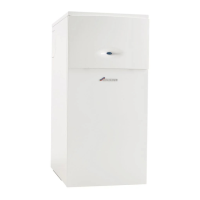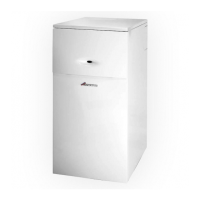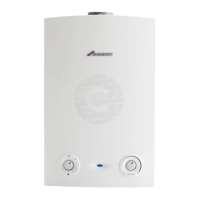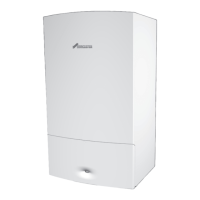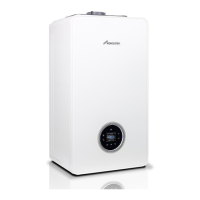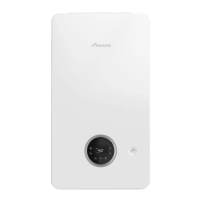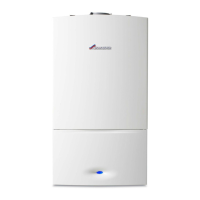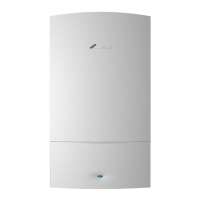PRE-
INSTALLATION
INSTALLATION & SERVICING INSTRUCTIONS
14
FLUE OUTLET POSITIONS
8 716 115 216b (09.2008)
• The flue must be fitted and terminated in accordance
with the recommendations of BS5440 : Part 1.
• The flue must not cause an obstruction.
• Discharge and any noise from the flue outlet must not
cause a nuisance.
• Flue gases have a tendency to plume and in certain
weather conditions a white plume of condensation
will be discharged from the flue outlet. Where this
could be a nuisance, for example, near security lighting,
an alternate position should be found.
• The air inlet/outlet duct and the terminal of the boiler
must not be closer than 25mm to any combustible
material.
Detailed recommendations on
protection of combustible materials are
given in BS 5440: Part 1
• A protective terminal guard must be fitted if the
terminal is 2m or less above a surface to which people
have access.
The guard must be spaced equally (minimum 50 mm)
around the flue and fixed to the wall with plated
screws. See Contact Information (inside front cover).
NOTE: All measurements are the minimum
clearances required.
Terminals must be positioned so to
avoid combustion products entering
the building.
Deduct one metre off the total flue length for every 45° bend used
Deduct two metres off the total flue length for every 90° bend used
The flue turret has a built-in angle of 3° to
ensure that the condensate flows back to
the boiler for safe disposal via the
condensate waste pipe.
All horizontal flue sections must rise by 3°
or at least 52mm for each metre away from the
boiler to ensure condensate flows back
into the boiler.
600mm minimum
clearance from
a skylight to a
vertical flue
500mm
Vertical flue clearance 500mm
to non-combustible building
material, and 1,500mm clearance
to combustible building material
600mm distance to a boundary,
unless it will cause a nuisance.
BS 5440: Part 1 recommends
that care is taken when siting
terminals in relation to boundaries
200mm below eaves
and 75mm below
gutters, pipes and drains
200mm
25mm
DRAI

